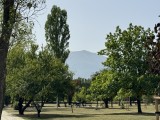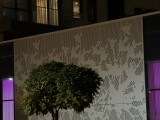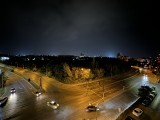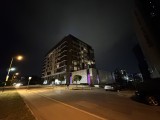Apple iPhone 15 Pro Max review

A total of four cameras with a new 5x telephoto
The Apple iPhone 15 Pro Max has a total of four cameras - three on the back and one selfie camera. Each of these setups is further assisted by a LiDAR system (back) and a 3D ToF camera (front). All but the selfie camera have been updated on the new Pro Max model, though some of the updates may go unnoticed if all you've got is the specs.

Let's explore the camera system on the back. Starting with the main camera on the back, the 15 Pro has a 48MP sensor with 1.22µm pixels and second-generation sensor-shift stabilization. The lens' focal length has a 24mm equivalent and the aperture is f/1.78.
specs
48MP f/1.8
dual pixel AF
sensor-shift OIS
1/1.28" 1.22µm
12MP f/2.8
dual pixel AF, OIS
1/3.06" 1.12µm
12MP f/2.2
dual pixel AF
1/2.55" 1.4µm
While the key numbers look unchanged, Apple is introducing a few new imaging possibilities for the iPhone 15 Pros. You can now capture 48MP HEIF/JPG images alongside 48MP ProRAW. They've also come up with 28mm and 35mm equivalent digital zoom modes, and the iPhone will let you pick one of these focal lengths as your default setting.
The iPhone 15 Pro Max debuts the first periscope camera on an iPhone. Thanks to the folded optical design, the Pro Max finally zooms past 3x and up to 5x, or 120mm in 35mm equivalent terms. The optical design is unique. Apple calls it a tetraprism, and light gets reflected across four elements before reaching the sensor. The lens itself is an f/2.8, the brightest on a 120mm camera on a phone, as Apple claims, which, granted, is a pretty specific claim. There's optical stabilization, too, where the lens and sensor both move to counteract any camera shake.

The ultrawide is also carried over from the previous generation, but at least that one was upgraded last year and doesn't date all the way back to the 13 Pros. It's based on a 1/2.55" sensor with a 1.4µm pixel pitch and 100% focus pixels, which is coupled with a 13mm f/2.2 lens. Macro photography is supported, of course. This camera has a new anti-reflective coating, improved HDR and better Night Mode.

The selfie camera uses a 12MP 1/3.6" sensor again with a bright f/1.9 aperture on its 23mm lens and supports autofocus. There is also OIS, which is a rare feature on a selfie cam.
Finally, the 9-LED flash from last year is here to stay - it has the LEDs arranged within a 3x3 grid. Each of those can be independently adjusted and fired. It's a true-tone flash with slow sync.
Camera app and features
The viewfinder has stayed mostly intact since iOS 16. You can see outside of the viewfinder thanks to the precise calibration of the three cameras, allowing you to see what will be left outside the frame in real-time.
Apple's image processing includes all legacy features - Smart HDR, Night Mode, and Deep Fusion - and last year's Photonic Engine.

All enhancements, except for Night Mode, are out of the users' control. The Night Mode icon pops up automatically when a low-light scene presents itself, and you will see the seconds suggested next to the Night Mode icon. You can choose longer exposure or altogether disable the Night Mode.
Macro mode is available, too. Enabled by the ultrawide camera's autofocusing capability, it's an option you only get on the recent Pro models.
As usual, all cameras talk to each other, so they already know the correct exposure and tone mapping settings when you switch between them. This applies to both stills and videos.
The camera interface has 0.5x, 1x, 2x, and 5x toggles. The macro toggle appears automatically if you are close enough for such a photo. If you tap on the 1x toggle, you will zoom to 28mm equiv (1.2x), and an extra tap will get you 35mm (1.5x). As we have established, those are crops and upscales from the standard output, but pretty good ones, nevertheless.
You swipe between modes and have a couple of settings you can uncover with an upward swipe - flash, night mode, live photo, photo aspect, exposure compensation, and filters. In video mode, you can change the resolution and frame rate from the viewfinder.
Portrait mode is available on the main, tele and selfie cameras. There is a new Portrait feature on the new iPhones - portrait after the fact. The iPhone will detect when you capture a person, pet, or any subject that could be suitable for a portrait mode and automatically capture a depth map. And if you decide you want to blur the background later - you can do it from the Photos app. Neat! We guess apps like Focos might become obsolete soon.
We also noticed when the camera app was going to capture a depth map, it displayed an F shortcut on the viewfinder in the regular Photo mode. If you use it, you will capture a portrait right away, without going into the Portrait mode.
RAW capture is supported across all cameras, and it can shoot in 48MP for the primary one if you have enabled Resolution and RAW control. This will add a new toggle called JPEG Max.
There is this feature called Photographic Styles, which automatically edits a photo, one element at a time (applying different corrections to the subject and background, for example). You can choose between Standard, Rich Contrast, Vibrant, Warm, and Cool. You can tune each of these modes to your liking and set your preferred one as default. It's like filters but more permanent.
Cinematic Mode is present, as well as Action Mode.
Daylight photo quality
The primary camera on the Apple iPhone 15 Pro Max saves 24MP by default, though options for 12MP and 48MP are also available. The 48MP sensor still uses a Quad-Bayer color filter, which means the 24MP photos the iPhone saves are most probably a product of supersampling and multi-stacking.
The 24MP daylight photos from the main camera are surprisingly good, though typically Apple. Comparing them to the 12MP output we can see there is more detail in pretty much everything - foliage, labels, building decorations, the mountain. But then there is no detail increase on moving objects like cars (and plate numbers). Which means Apple does excellent super sampling, but it is still limited in a way.
Of course, it cannot be anything else as the camera has a 48MP Quad-Bayer sensor. It can crop the center from the 48MP image or supersample the 12MP output. We suspect it is the latter, judging by the contrast and the dynamic range.
Long story short - there is more detail to be seen in the 24MP photos and we think it is worth saving in this default resolution. Plus - the file size difference is about 1MB-1.5MB increase per HEIF image (say from 2.5MB to 3.8MB).
The photos are detailed, and there is no visible noise. The white balance is spot-on, and the color rendition is a 1:1 match to real-life. The contrast is great, while the dynamic range is wide enough.
Apple's image processing has mostly stayed the same for quite a while - the super accurate colors look somewhat anemic and their algorithm still tends to go overboard with the sharpening.
Tip: If the color rendition is not to your liking too, just use one of the extra Photographic Styles - we chose a more saturated one immediately after we were done with the review. This is not a filter you need to select every time, but a color preset that is always used unless you change it.
And here are a few 12MP photos taken with the new iPhone. Those are the usual oily over-sharpened mess the iPhones present as class-leading photos. Well, they are not. We suspect Apple finally understood that, and it solved it with... supersampling. Magic.
Apple dedicated a few moments from its nearly 1-hour iPhone 15 presentation to the new Pro models' custom 28mm and 35mm shooting modes. Technically, you get a cropped 28mm or 35mm portion from the native 24mm primary lens and you get it in the same 24MP resolution as the default 24mm images. Apple says that with the iPhone 15 Pro, "it's like having seven pro lenses in your pocket".
It's a convenient feature for those who prefer a focal length narrower than 24mm. You tap the 1x mode in the camera to go to 28mm (1.2x) and once again to 35mm (1.5x). You can even make either the default camera focal length, which is extra convenient.
We attempted a little experiment around this new functionality. We manually cropped from 24mm 24MP shots and upscaled them up to 24MP using Photoshop's Preserve Details 2.0 resampling method. Looking at the results side-by-side, we'd say there isn't a discernible difference between Apple's 28mm shot and our simple crop-and-upscale.
And here are the 28mm samples.
It's the same story with the 35mm images.
The 48MP sensor allows Apple to offer 2x lossless zoom by cropping from the center of the 48MP image. Those are always saved in 12MP, no matter the selected resolution for the main camera.
The 12MP 2x zoomed photos are very good - the detail is enough and it is not over-sharpened, the contrast is high and the dynamic range is wide. The colors are a match to the standard output.
We can see traces of supersampling, which were most obvious in the foliage, but for all intents and purposes - those are solid 2x zoomed photos.












Main camera 2x zoom 48mm, 12MP
Some of our readers asked for 3x zoomed photos, as the difference between 2x and 5x is not that small. And they do have a point.
Unfortunately, the 3x zoomed photos are clearly lacking in detail as the crop and upscaled beyond 2x becomes obvious. There is no Apple "magic" here, just a simple digital zoom.
Finally, let's look at some 48MP photos. Looking through them, we saw detail that was not visible on the 24MP images, which means they could be worth something especially if shot in RAW. They are not that detailed in full resolution, obviously, and heavily over-sharpened.
The new 5x telephoto camera saves very good photos - the resolved detail is plenty, even if not impressive, the noise is low, and the sharpness is just right. The rest of the properties are a match to what the main camera offers - great contrast, realistic dynamic range, and accurate colors.
And here are a few 10x zoomed photos. Those are surely not on S23 Ultra 10x level, but we suspect that Apple does some supersampling here, too, as those photos exhibit more detail than a simple crop and upscale would have offered. So, if needed, the iPhone 15 Pro Max would offer zoomed photos beyond 5x with good quality.
The 12MP photos from the ultrawide shooter are among the better ones we've seen from such a camera, though not the best. They do offer high resolved detail and outstanding corner rendition and sharpness, but their high-frequency detail like foliage is a smeared and over-sharpened hot mess.
Other than that, the ultrawide photos are quite presentable with low noise, high contrast and good dynamic range, as well as accurate colors.
The ultrawide camera also supports dual-pixel autofocus, which comes in handy when you want to shoot macro photos from as close as 3-4cm. As soon as you are really close to a subject, the camera can automatically switch to a macro mode, but it will be with a field of view matching the primary camera. This means that it will crop and then upscale. That's why we prefer to just switch to the UW camera and do it by ourselves.
The macro shots we snapped with the ultrawide camera are excellent - the subject on focus is rendered very well - detailed, sharp, and colorful. The contrast across those photos is great, and the dynamic range is commendably wide. The colors from this up-close are surprisingly lovely.
Selfies
The iPhone 15 Pro Max has the same selfie camera Apple introduced last year - a 12MP sensor with 23mm f/1.9 OIS lens and autofocus. The camera still offers two FoV settings in the viewfinder - the slightly zoomed-in 7MP crop that is equivalent to a 30mm field of view and the full 12MP mode, which has a 23mm equivalent FoV.
If you hold the phone in portrait orientation, selfies are cropped to 7MP to provide a tighter framing but rotate the phone horizontally, and you get more of the scene with the phone automatically switching to the wider 12MP mode. You can also switch between those two modes manually by tapping on the arrows near the shutter button.
The 12MP selfies we shot on the iPhone are superb - the detail is plenty, there is no noise, the colors are lovely and so is the contrast, while the dynamic range is adequate and not over the top.
Apple's processing once again shows its true self as some facial features come out a bit too pronounced by sharpening and micro-contrast enhancement. While we are not fans of the skin-smoothing algorithms used by other brands, Apple seems to be on the exact opposite side of the spectrum, which is not very likeable either.
Portraits
The iPhone 15 Pro Max defaults at 2x portraits, but you also have 1x and 5x options. The simulated 48mm focal length is perfect for such photos, but the native 120mm f/2.8 lens should offer some excellent shots.
Let's start with the default 2x shots. Those are saved in 12MP and appear to be excellent - the accuracy of the subject separation is impressive, the simulated blur is incredibly convincing, the colors are likable, the dynamic range is wide.
It's just that when you zoom at 100%, you will see the person is not that detailed, with mediocre sharpness across the board.






Default 2x zoomed portraits, 12MP
The 1x photos are saved in 24MP and while they offer a wider field of view, they don't offer much more resolved detail. They are still some solid shots and among the better ones we've seen.
Finally, let's check the 5x zoomed portraits. We had to step 1m away to shoot those, and we admit those are not that convenient to take no matter what the scene. Then again, those are simply stunning! Everything is superb here - subject rendition, detail, sharpness, colors, facial features. Same goes for the background and the blur - everything looks impressive. And the global dynamic range and contrast also deserve praising.
The colors are accurate but not that lively, so if you want more saturated one - just set a specific photographic style.
Low-light photo quality
The modus operandi of Apple's Night Mode remains unchanged - it triggers automatically in low-light scenes and usually chooses 1s exposure for the primary camera and 2s-3s for the rest. You can choose a different exposure time or disable the Night Mode. Once disabled, it will stay this way until you enable it or restart the camera app.
The Night Mode shots are always saved in 12MP, and so are the 2x zoomed photos, as we established. The only way to get a 24MP nighttime photo is to disable the Night Mode.
The first set of photos we offer you below were shot on Auto, and for most, the algorithm chose 1s exposure time. Only the first and the last photo were shot without NM.
The (Auto) photos from the primary camera are impressive. The ones shot with Night Mode are slightly brighter than reality, but definitely not over the top. The photos are abundant in detail, there is no noise, the sharpness is top-notch.
The exposure is excellent across the board, the dynamic range is realistic with sometimes brightened shadows, and the color presentation and saturations are lively and lovely.
The 24MP photos are more realistic looking, with a cooler tone, darker overall exposure, and darker and less contrasty shadows. There is still plenty of detail, and while there is some noise, it doesn’t get in the way.
The Auto photos we shot at 2x zoom are impressive - they are detailed, in fact, more detailed and sharper than any 2x telephoto camera will offer you nowadays. They are noise-free, the contrast is high, the dynamic range (deeper shadows some but not many blown highlights), and the colors are superb.

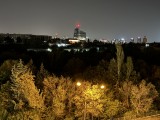
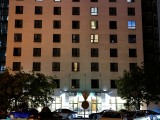
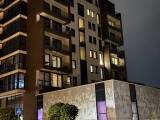
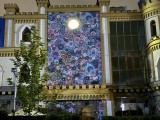
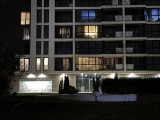

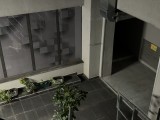
Main camera 2x zoom Auto, 12MP
You can get a wider dynamic range, more realistic look, and colors for the 2x zoomed photos if you opt out of the Night Mode. But this will lower the resolved detail and the sharpness.

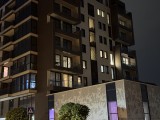


Main cam 2x zoom Night OFF, 12MP
The 5x telephoto camera captures amazing nighttime photos! It prefers to shoot with Night Mode (about 2-3s), and the images turn out thoroughly impressive with plenty of detail, outstanding sharpness, low noise, great color presentation, high contrast and satisfactory dynamic range.
These are some of the best 5x zoomed nighttime photos a phone can capture in 2023.

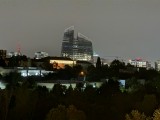

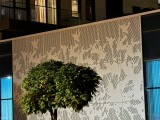




Tele camera 5x zoom Auto, 12MP
Opting out of the Night Mode often leads to a 5x digital zoom with the main camera. We got only three real photos without Night Mode from the telephoto camera. They are still detailed and sharp enough and look more realistic. They are a bit noisier and darker than the Night Mode ones, and with more natural color saturation.
The ultrawide camera offers excellent Auto photos - they are bright, detailed and with balanced sharpness, with well-cleaned noise but not too harsh, and with superb color saturation and high contrast.
Opting out of the Night Mode is not recommended as the photos are darker, softer and noisier, and with dull colors. They are still very much usable but are rather mediocre.
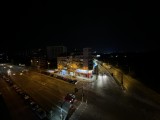
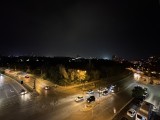
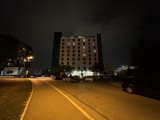

Ultrawide camera Night OFF, 12MP
And here's how the main camera stacks up against the competition in our extensive Photo compare database.


iPhone 15 Pro Max against the iPhone 14 Pro Max and the Galaxy S23 Ultra in our Photo compare tool
Reader comments
- Ingvaar
- 22 Apr 2025
- JK{
Hi, I agree with you on a lot of points you made, but I have to make a little correction. When you type and you make a mistake, you can go back and correct it by pressing and holding the space button on your keyboard and moving your finger (like s...
- NeilLaw
- 13 Dec 2024
- m5Y
My first and last iPhone. I honestly don't know how to begin my frustrations. Being a long time android user I was looking forward to the "it just works" however Lack of decent keyboard options, SwiftKey and gboard feel feat...
- Anonymous
- 19 Sep 2024
- IbL
Then the phone would be too expensive and the charging would take to long and they w8uld need to redesign the entire case to fit the battery






































